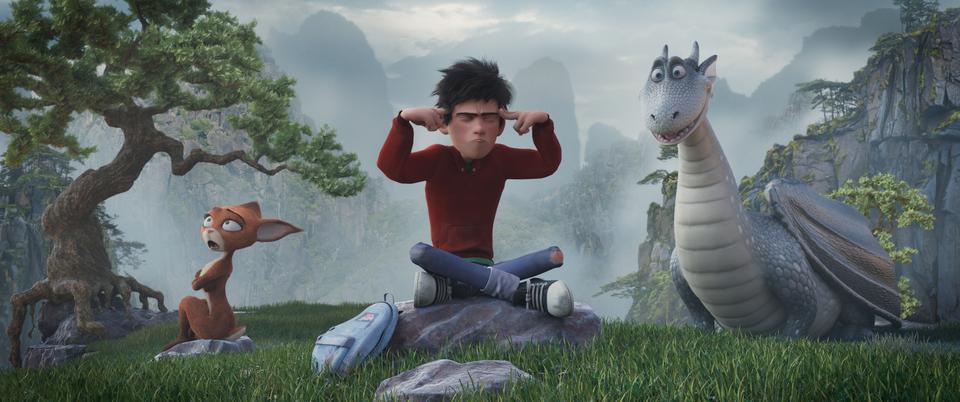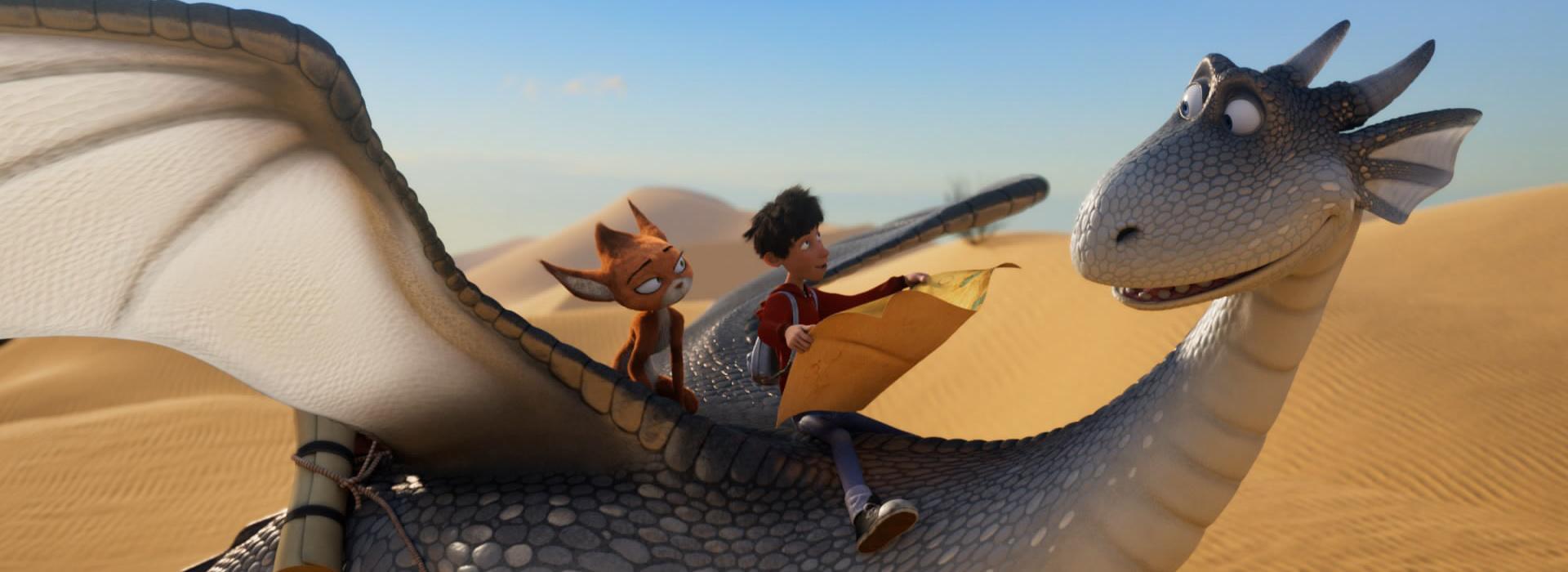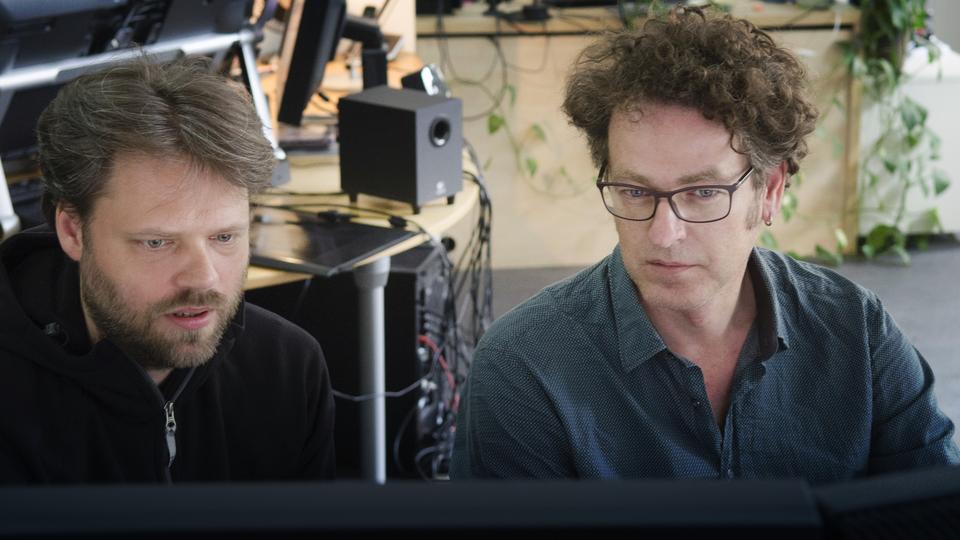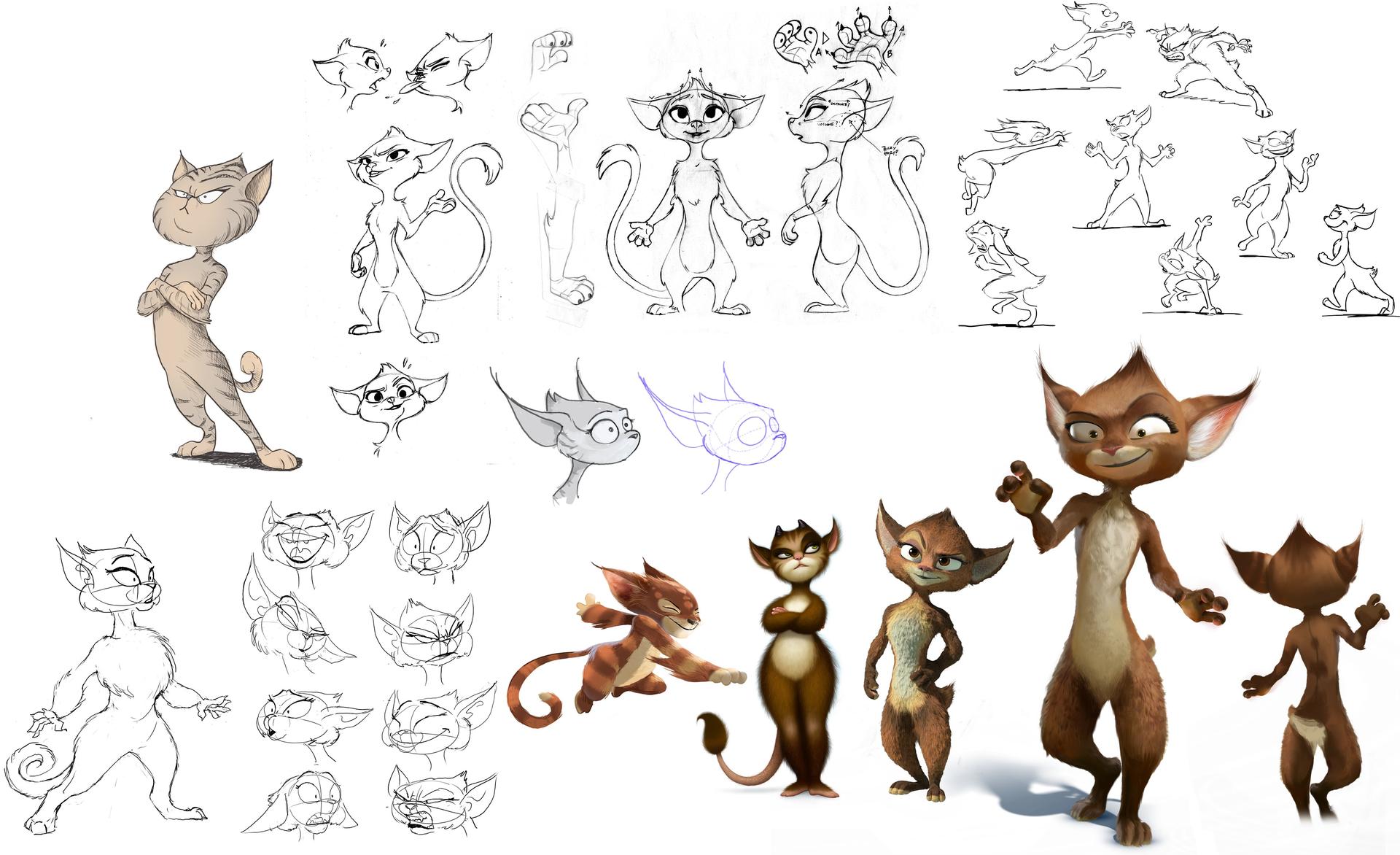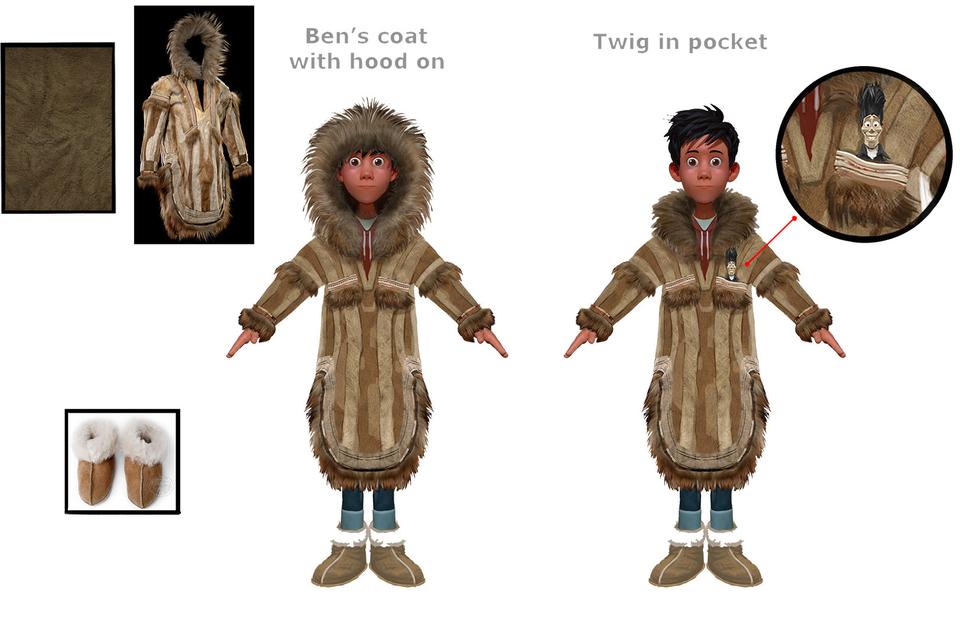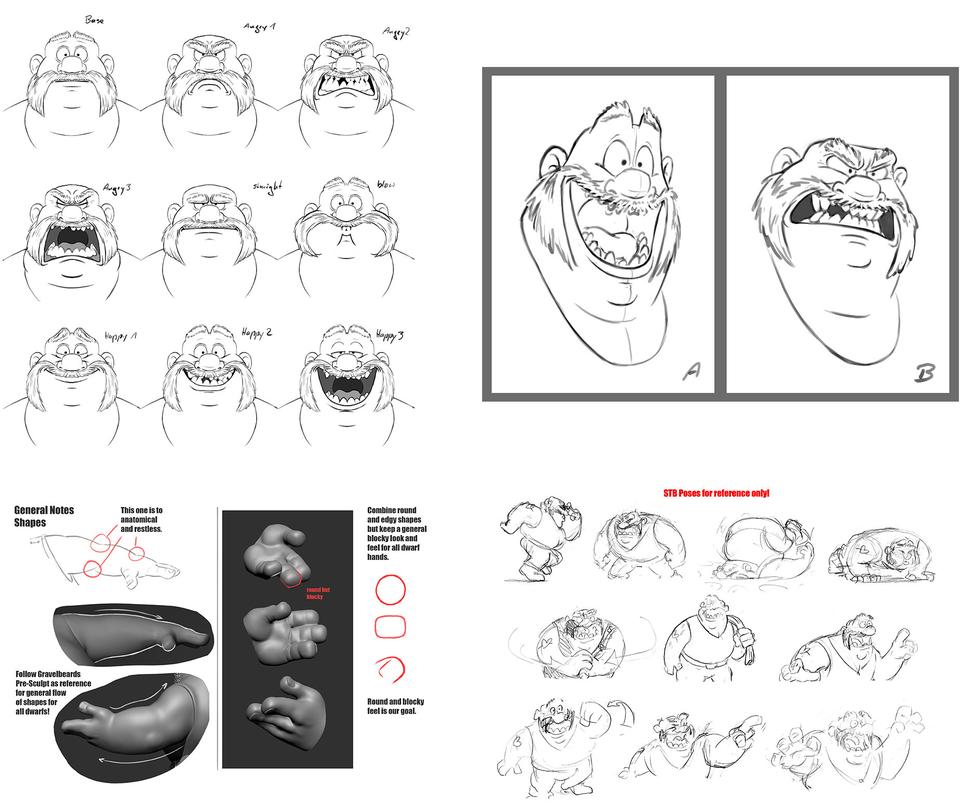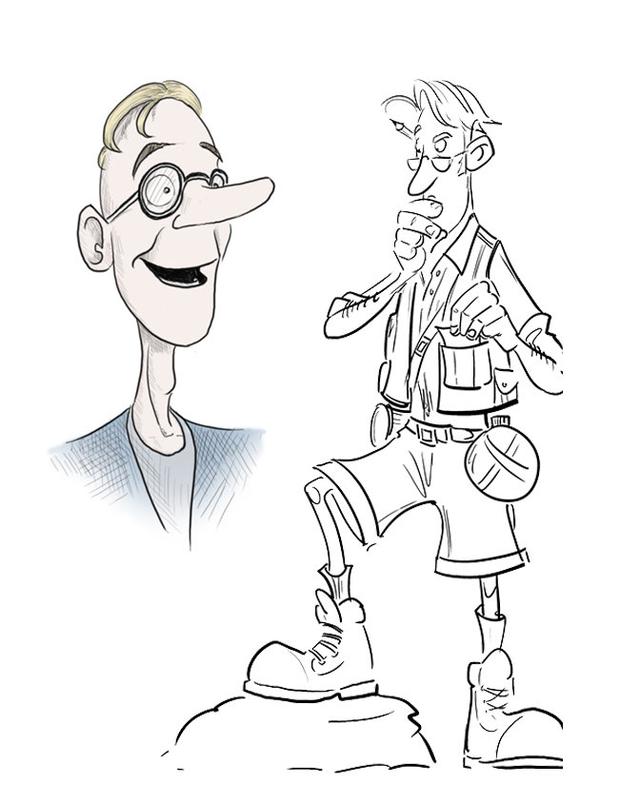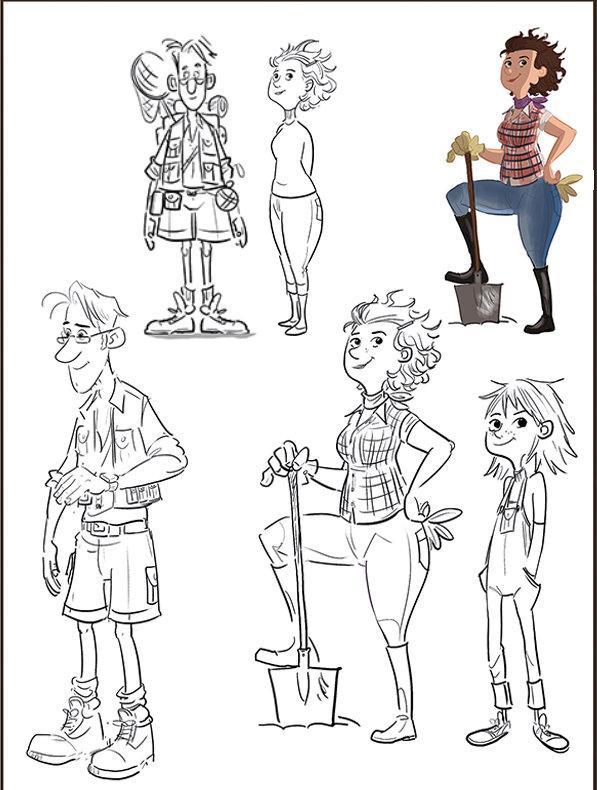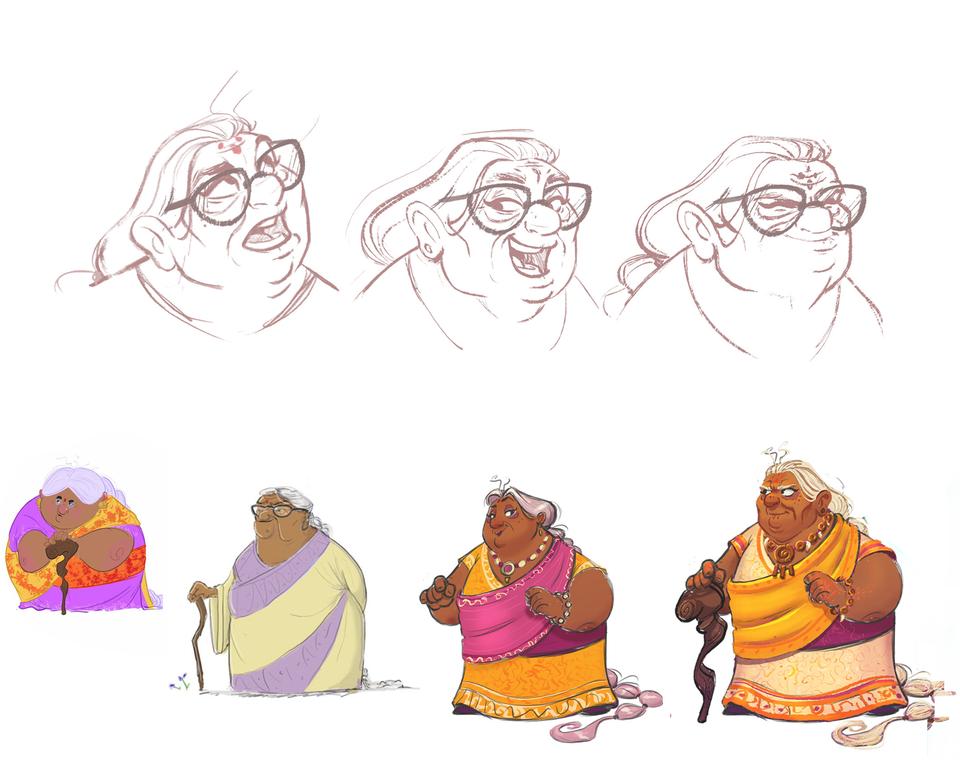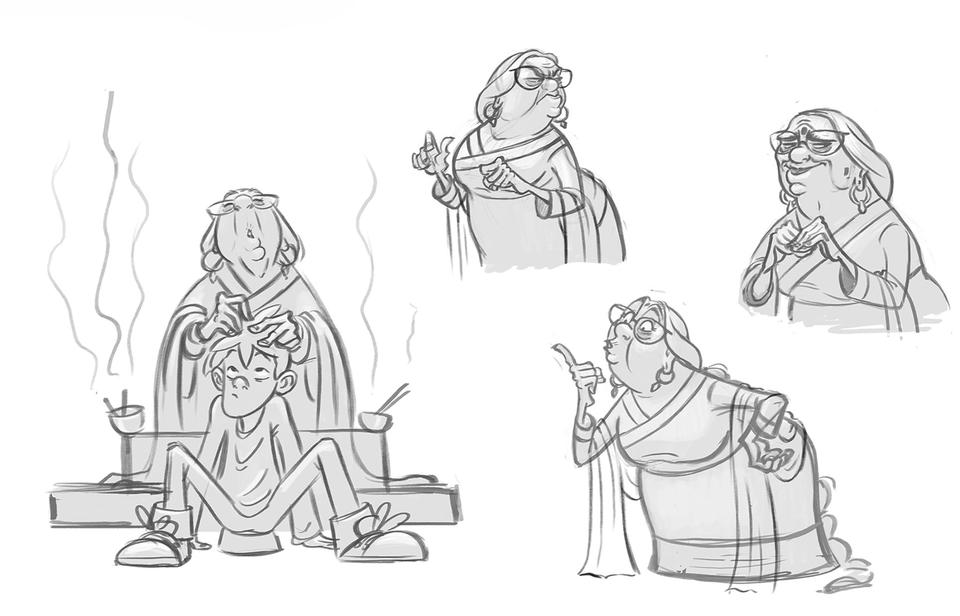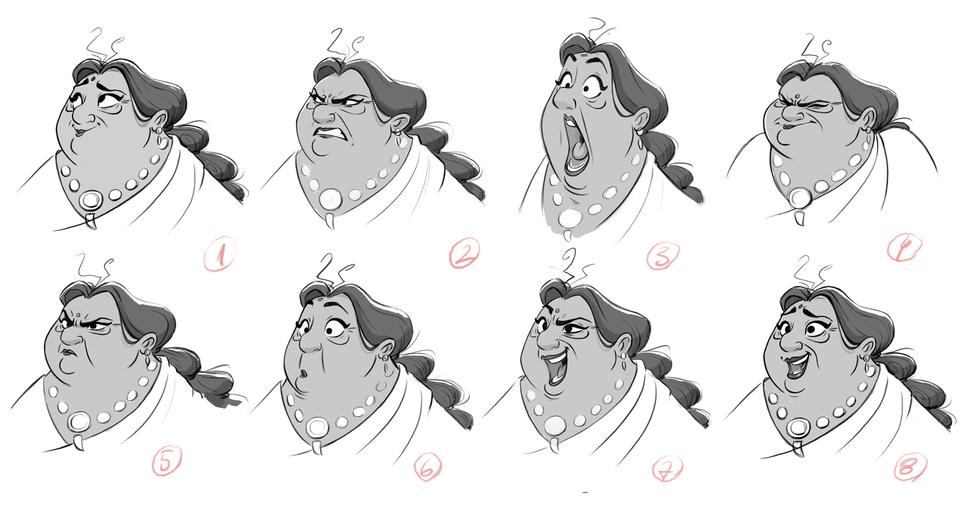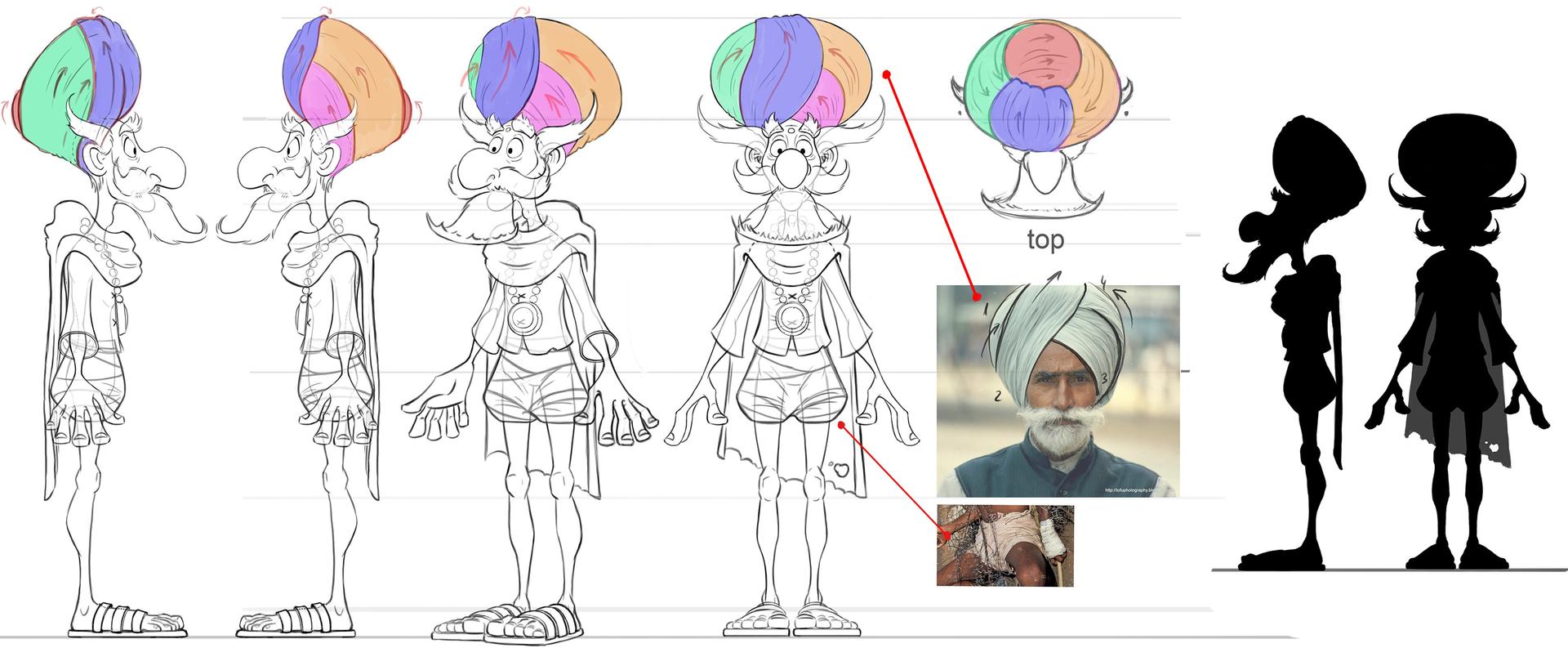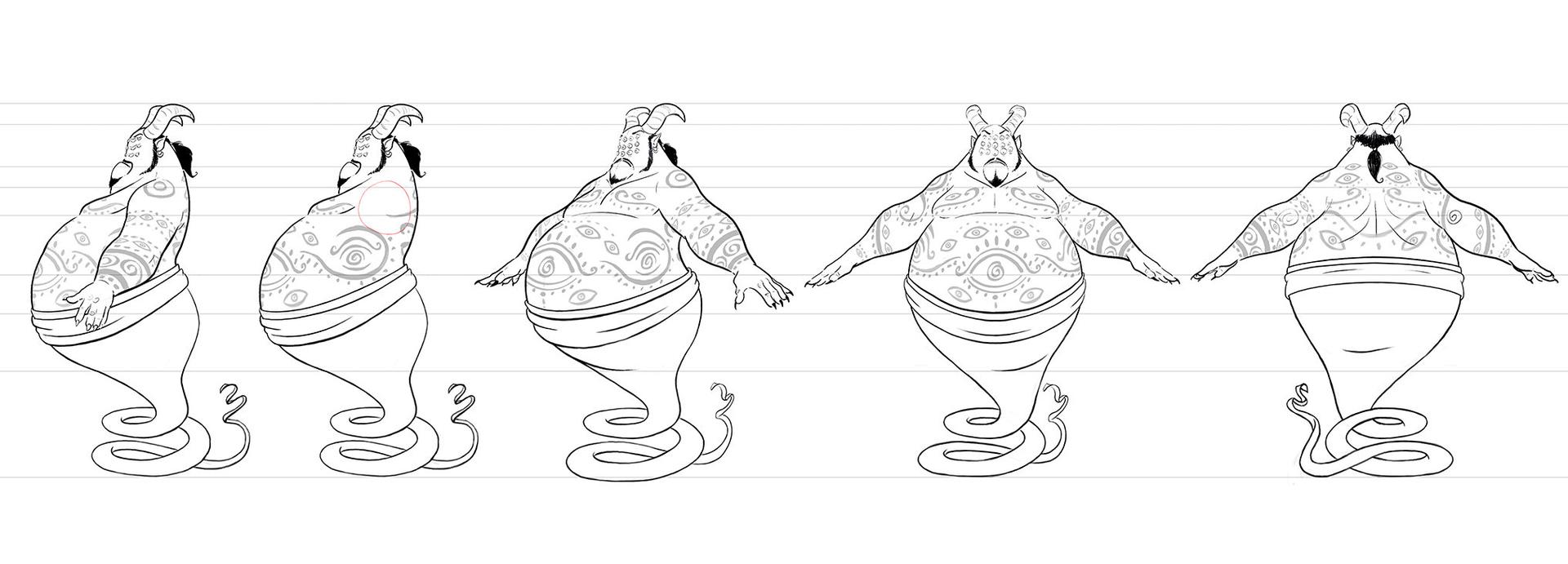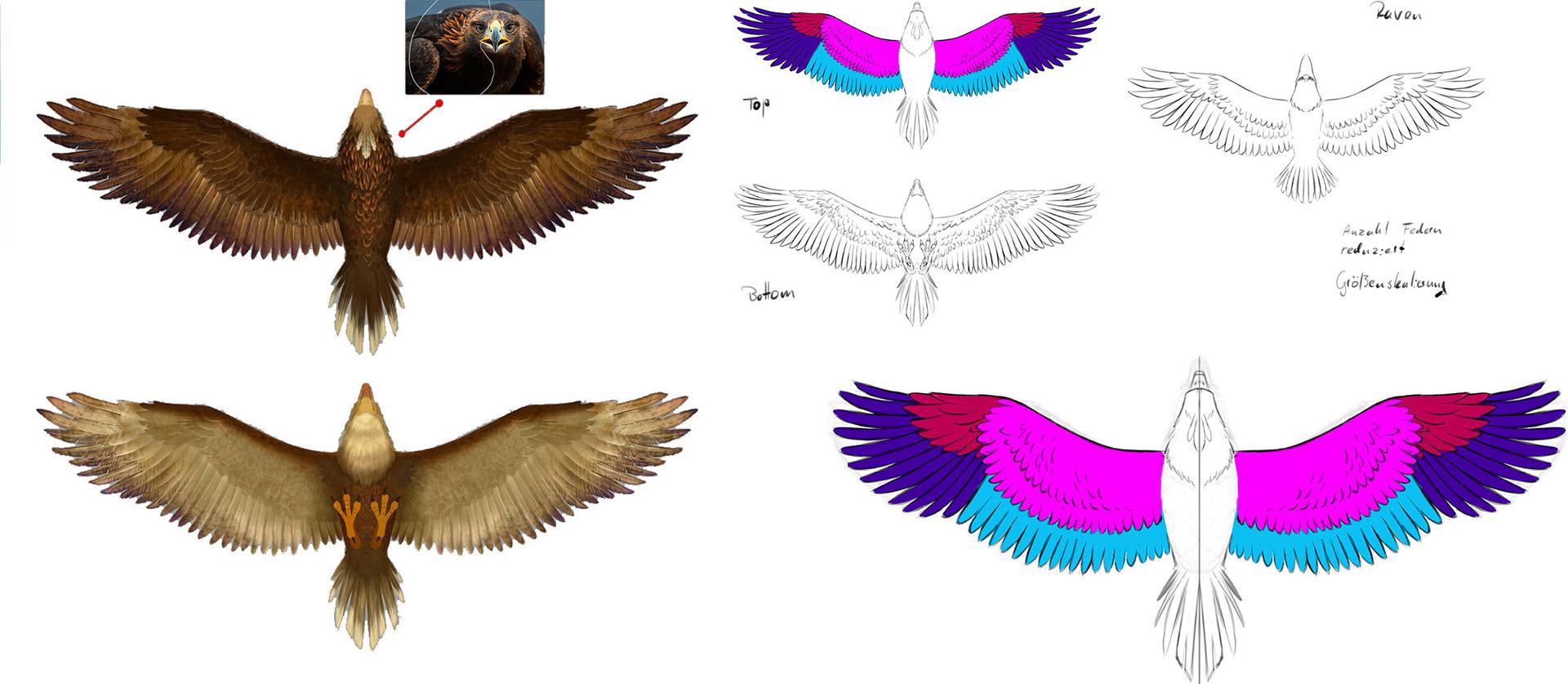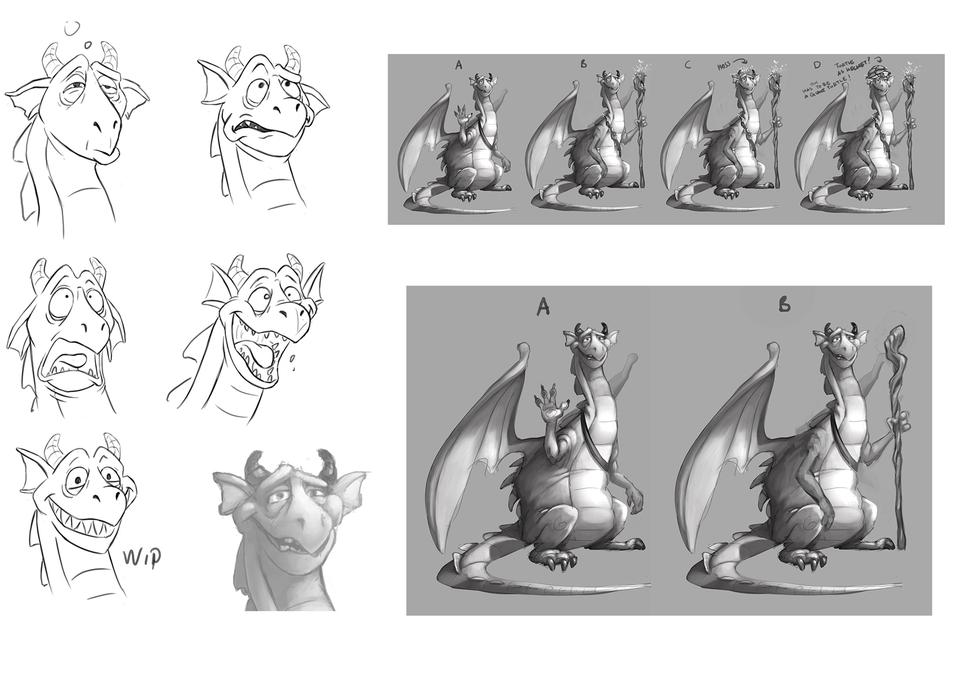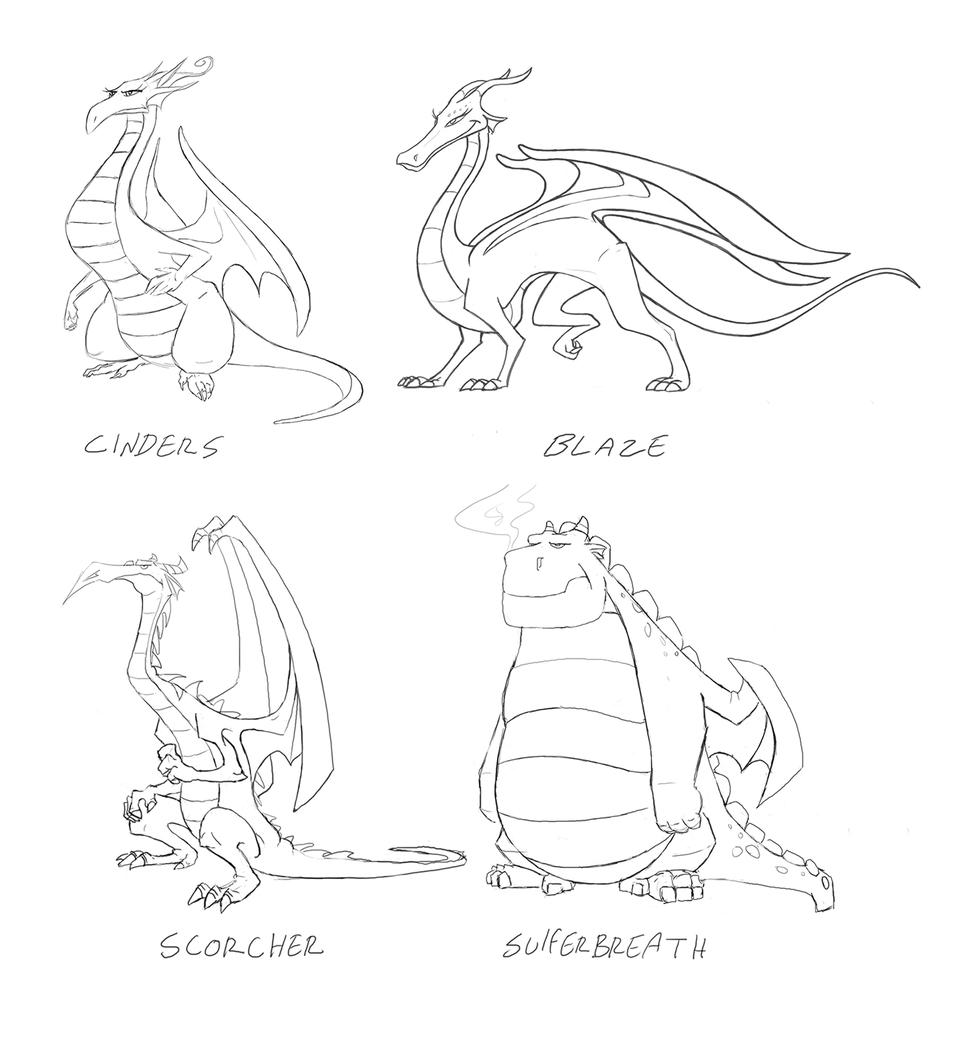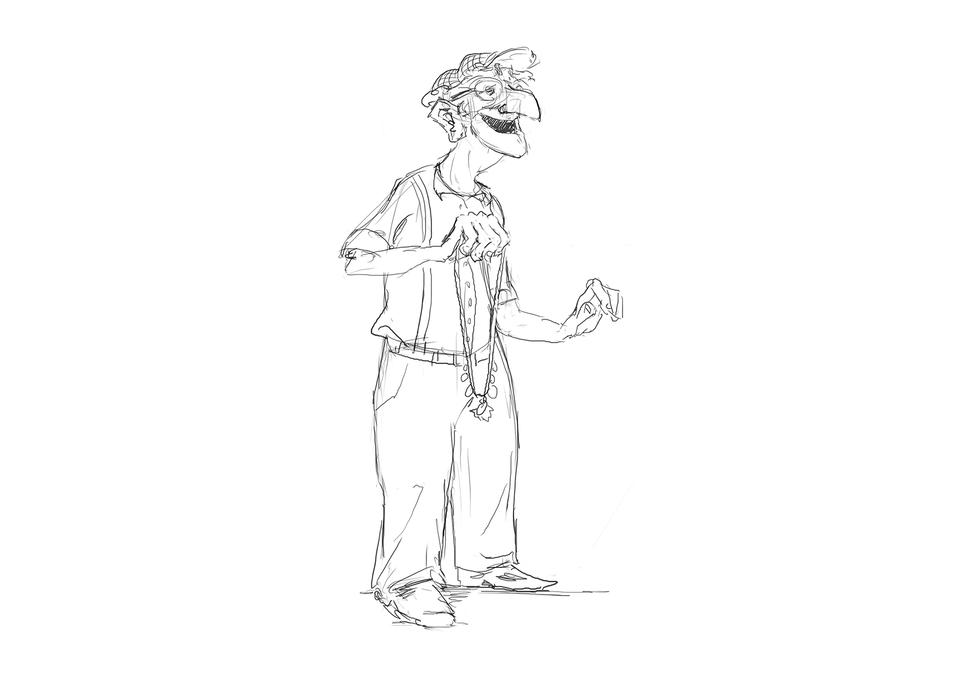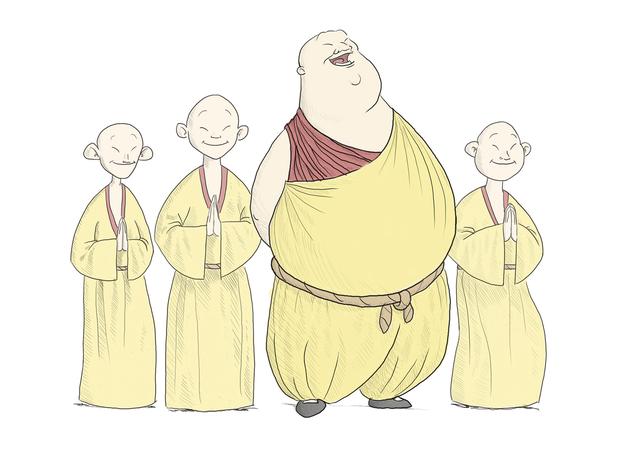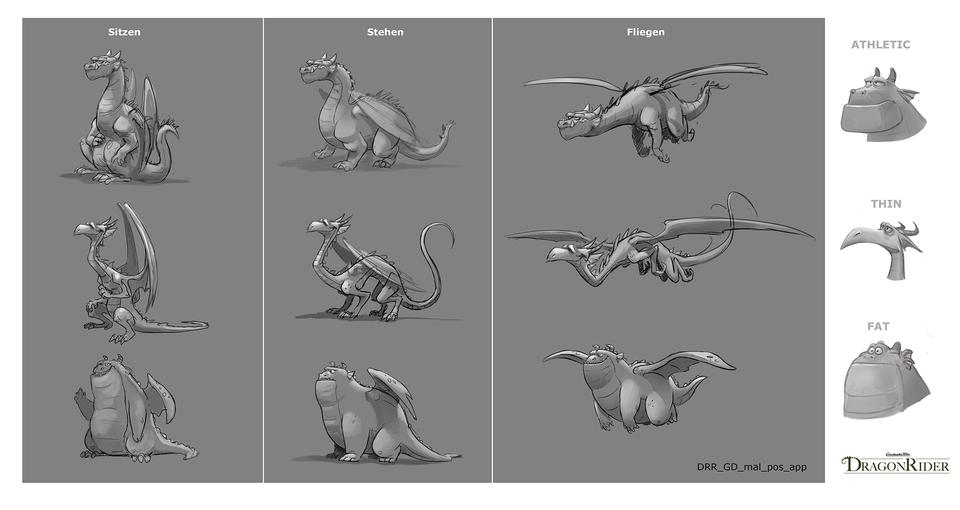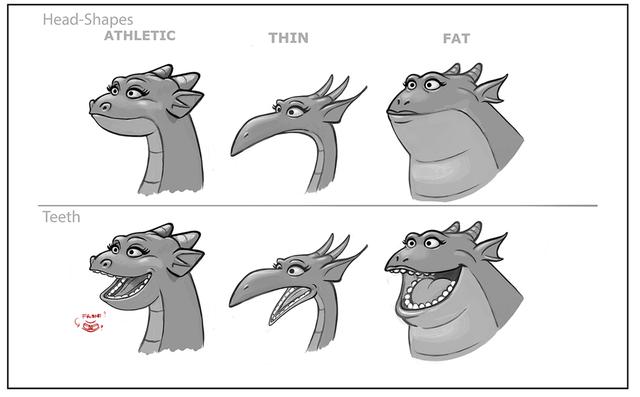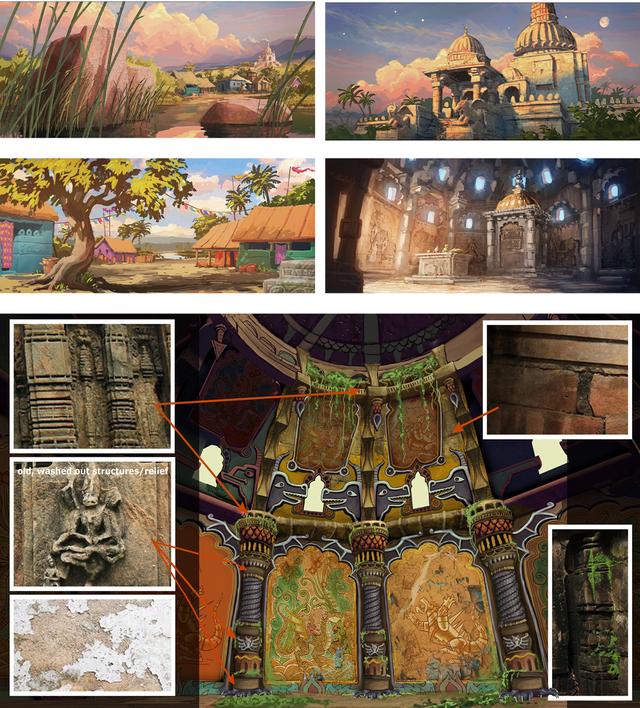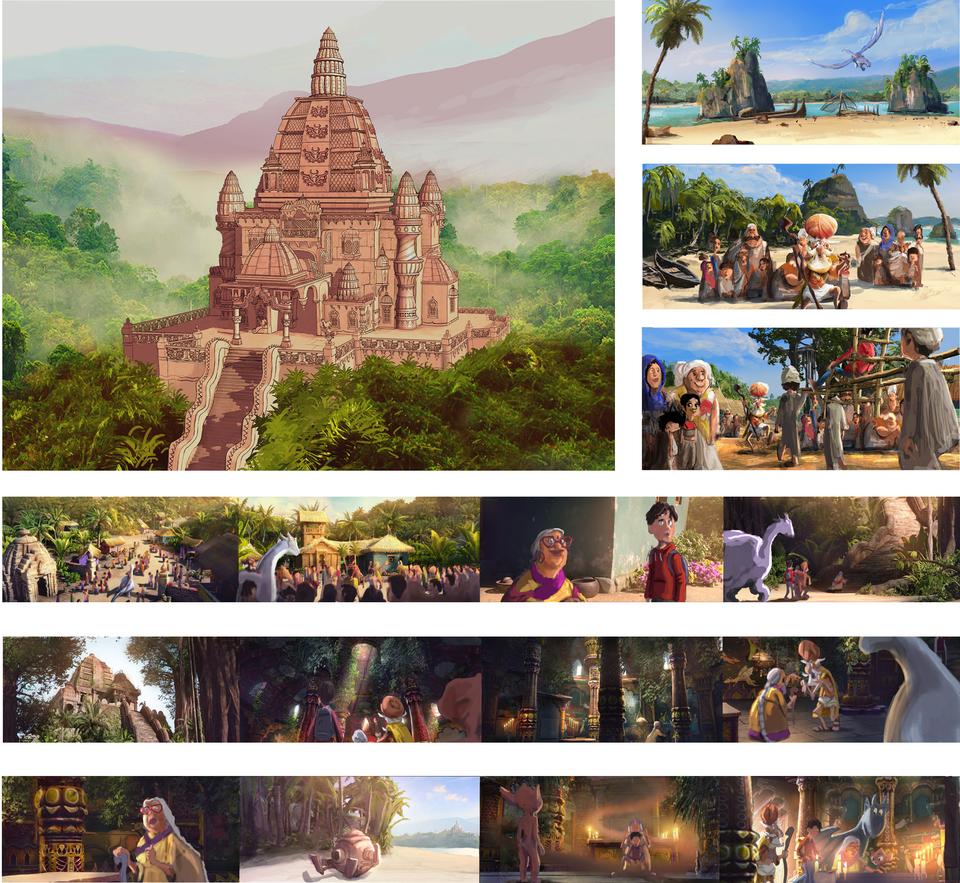Based on early drafts of the script, the production designer Alexander Pohl and his team started creating mood boards, concept paintings and color sketches to develop the look and feel of the film. All major sets were created as rough three-dimensional sketches that were used as the basis for camera and action layout.
Using the previously defined scenes and camera angles, the final sets were created by Rise FX, Big Hug FX and Lumatic.
In the role of the mediator between the art- and the VFX-department the production designer was responsible to lead through the artistic transformation that ended up in the creation of the so called color script as the artistic guideline for the final grading process.
The creative goal regarding the production design was to hit the right balance between stylized and detailed designs. In order to minimize the discrepancy between stylized characters and photo-realistic set elements, the large shapes that define the space of the set were reduced to a simple, recognizable form. On the other hand, the colors in the final color script were overdrawn for each individual set from the start in order to rule out an uncanny valley effect.
In addition to the 3D sets, over fifty matte paintings were created at Lumatic by the production design team, most of which spanning 360 degrees.

Dragon valley sets
The Valley of the Dragons was challenging in many ways. On the one hand because most of the places are played here, on the other hand because it should actually be an uncomfortable place that the dragons want to leave, but there should also be scenes in the film that suggest a certain cosiness. In the book it is assumed that the valley is located in more northerly regions. Since these are mostly bare and if wooded, then only with conifers, it was especially difficult to tell the home of the brownies. Because these small, cat-like creatures build their caves in the cavities of trees, which was simply better designed with gnarled deciduous trees than with the straight, columnar trunks of the Nordic spruce. Swamps also appear in the script and so in the end the valley became a place that cannot be explicitly assigned to an existing country. The valley is most likely to be associated with British Columbia in western Canada, which has both arctic and warm temperate climates. The color spectrum of this set is dominated by cold green, turquoise and blue tones.





City and harbour sets
According to the script, the second set takes place in a German city by the sea. Here, too, there is no more precise information about which city is actually involved. All of the scenes here take place at night. There are two places that had to be designed. One is the harbor with an old warehouse, where Firedrake and Sorrel meet the orphan boy Ben for the first time; it is an abandoned part of the harbor, hazy and eerie. Blue-green and yellow-red shades dominate here. The other scenes take place in the city and especially in front of the premiere cinema, where Ben steals the knight's costume to escape his pursuers after he stole a necklace from a jeweler. The architecture is said to be primarily shaped by the historicist building that was common in the 19th century; but also the architecture of post-war modernism, which changed the German cityscape after the reconstruction, are included in the design concept. The architecture of the cinema is based on the newly designed building of the Zooplalast by Paul Schwebes. In contrast to the curved lines that are usually found in animated films, the formal language is strict and straightforward. In terms of color, the blue of the night is broken up by the complementary, amber-colored lantern and shop window light.



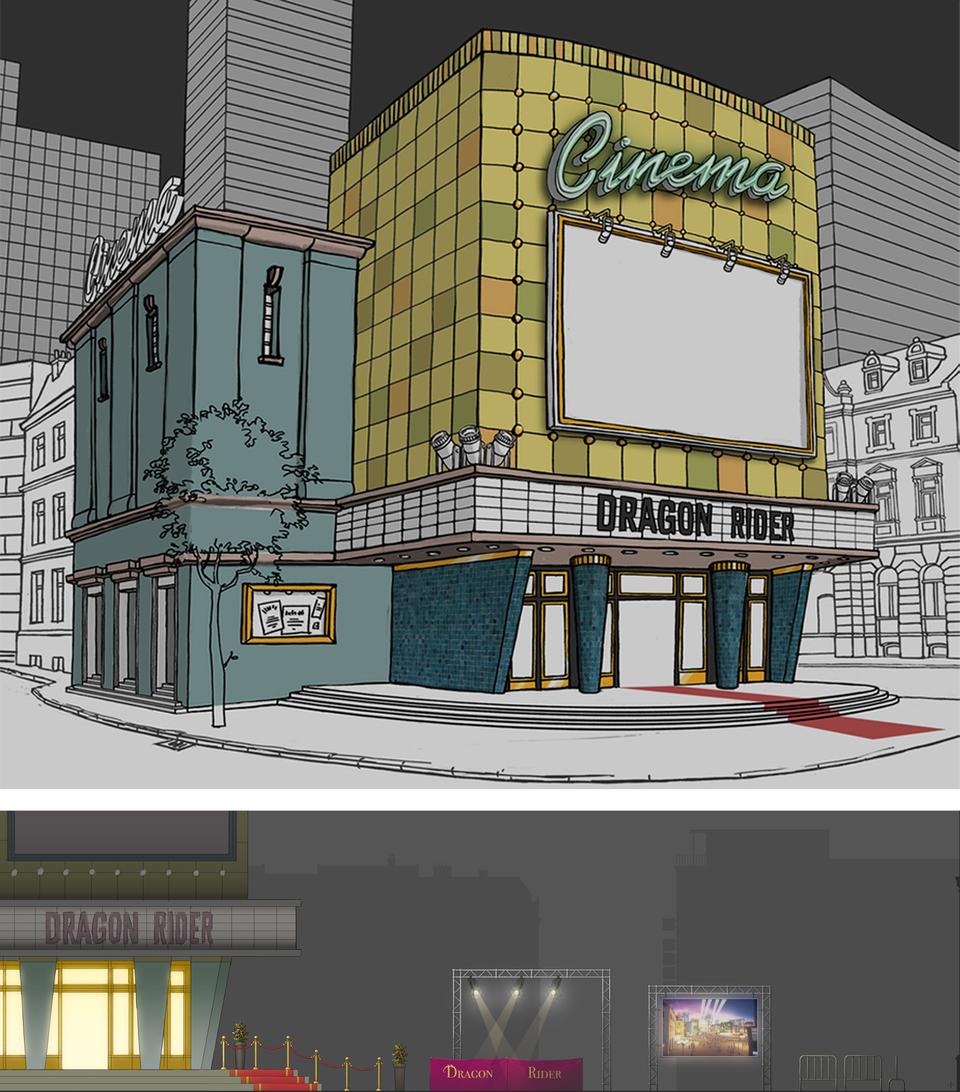
Nettlebrands castle and the mountains around it
In this set, the antagonist Nettlebrand and his helpers are introduced for the first time. The scenes there take place outside in a mountain range and in a forest on a hill, where our heroes land, and once inside the castle of Nettlebrand. The whole scene is supposed to appear mystical, ghostly and, in keeping with the dwarf characters and the homunculus Twigleg, in an ironic way reminiscent of the black and romantic imagery of the Nibelung saga. Nettlebrand's castle, whose Gothic, sacred architecture is supposed to be reminiscent of the neoclassicism of a Neuschwanstein, sits enthroned in front of a mountainside like an ominous threat. This architecture is broken up by steam engine-like elements that are supposed to make the building appear like a living monster. This scene also takes place at night. In order to stand out from the cityscape and to support the mystical atmosphere, the light should be given a surreal character by means of light gobos. Fog and autumn leaves also support this atmosphere. The hall in which Nettlebrand resides is reminiscent of a sacred nave that has been badly damaged over the years. Here, too, style elements similar to steampunk are installed everywhere, which are intended to illustrate the transformation of the building by the magician Pestrosius.The dungeon halls in Nettlebrands Castle are intended to illustrate the size of this building once more. The fantastic representations of the dungeon halls of Piranesi served as a model.






Desert sets
After our heroes have escaped Nettlebrand for the first time, they involuntarily end up somewhere in the middle of a hostile desert. The scenery essentially consists of three locations. A dilapidated, ancient Egyptian temple complex in the style of the double temple of Kom Ombo, the tomb below where our heroes meet the basilisk and the oasis where the professor has set up a camp with his mythical creatures.The whole setting is strongly stylized. The temple complex is unusually located in the middle of a sea of dunes that stretch like an endless sea to the horizon. No civilization far and wide. This is intended to make the hopeless situation of our heroes even more clear. Strong ocher / brown tones dominate, which should contrast with the azure blue sky.


Montage sequence
The Montage sequence is a series of short shots that show different locations through which our heroes have to fight their way. A lovely song underlines in an ironic way the many absurd situations they get into. The places are wildly mixed up to illustrate the disorientation of our would-be adventurers. Here, some places are dealt with in quick succession, which are given significantly more leeway in the script or novel.

Canyon set
After the arduous odyssey through world history, our heroes land on a barren stretch of coast. Here Sorrel is kidnapped by a huge bird of prey and an action-packed chase begins. Right from the start, the set was designed as a kind of natural obstacle course. Since the bird of prey is reminiscent of a giant bald eagle, the decision to design the set in the style of the Grand Canyon in Arizona was only an obvious one. The challenge for the layout artists was to design the chase in such a way that the viewer gets the feeling of flying higher and higher until Sorrel plunges into the depths at the highest point to be rescued by Firedrake just above the bottom. For this purpose, a library of modular layout geometries of the rock formations was built, which could be moved as desired. The reddish-brown rock formations stand in stark contrast to the colors of the following set.
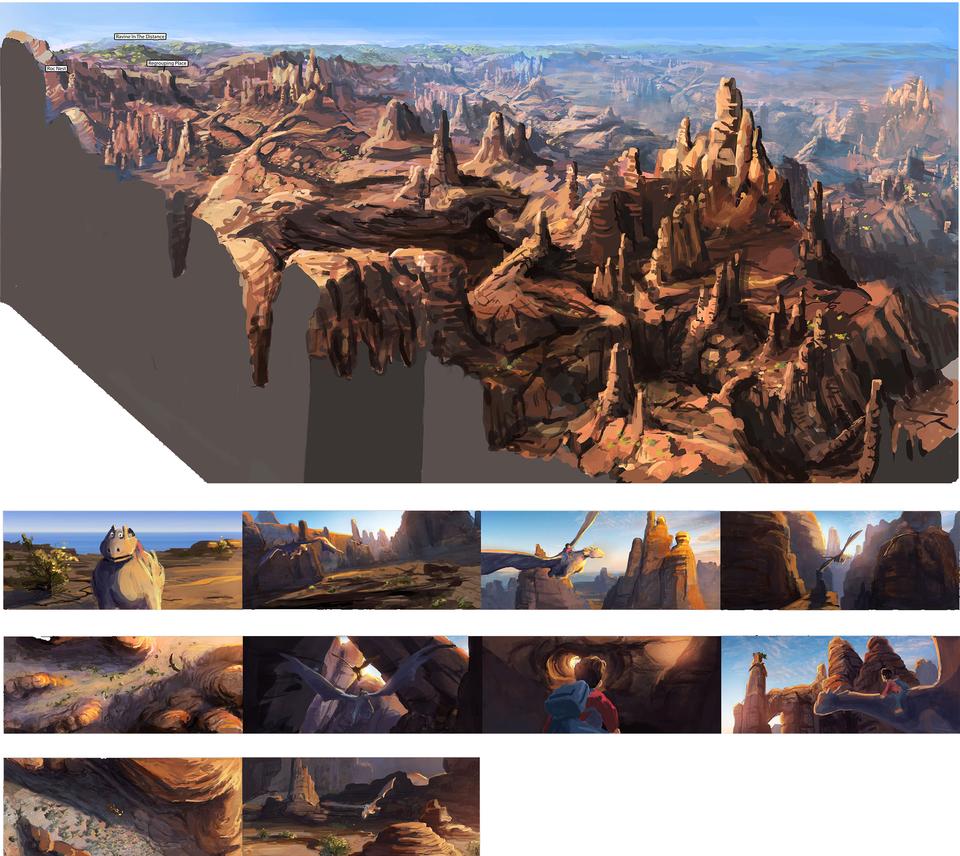



The ravine of the djinn
After the jubilation over the victory over the Roc-eagle, a gigantic jungle landscape with deep, overgrown gorges that seem to disappear in the subtropical haze opens up to our heroes on a high plateau. This is the place the professor spoke of. The Ravine of the Djinn, which is supposed to answer your question about the place where the Rim Of Heaven should be. They fly recklessly into the gorge to brave the next danger. The set represents a canyon overgrown by subtropical plants, which ends in a kind of arena in which the fight with the Djinn takes place. Warmer green tones dominate to stand out from the color palette of the Dragon Valley. The heroes have to fight their way through swampy waters and lianas. The steamy, hot atmosphere should literally be felt. There is an old beetle in the arena where the Djinn lives. Around the car are scattered relics of former enemies who fell victim to the Djinn.
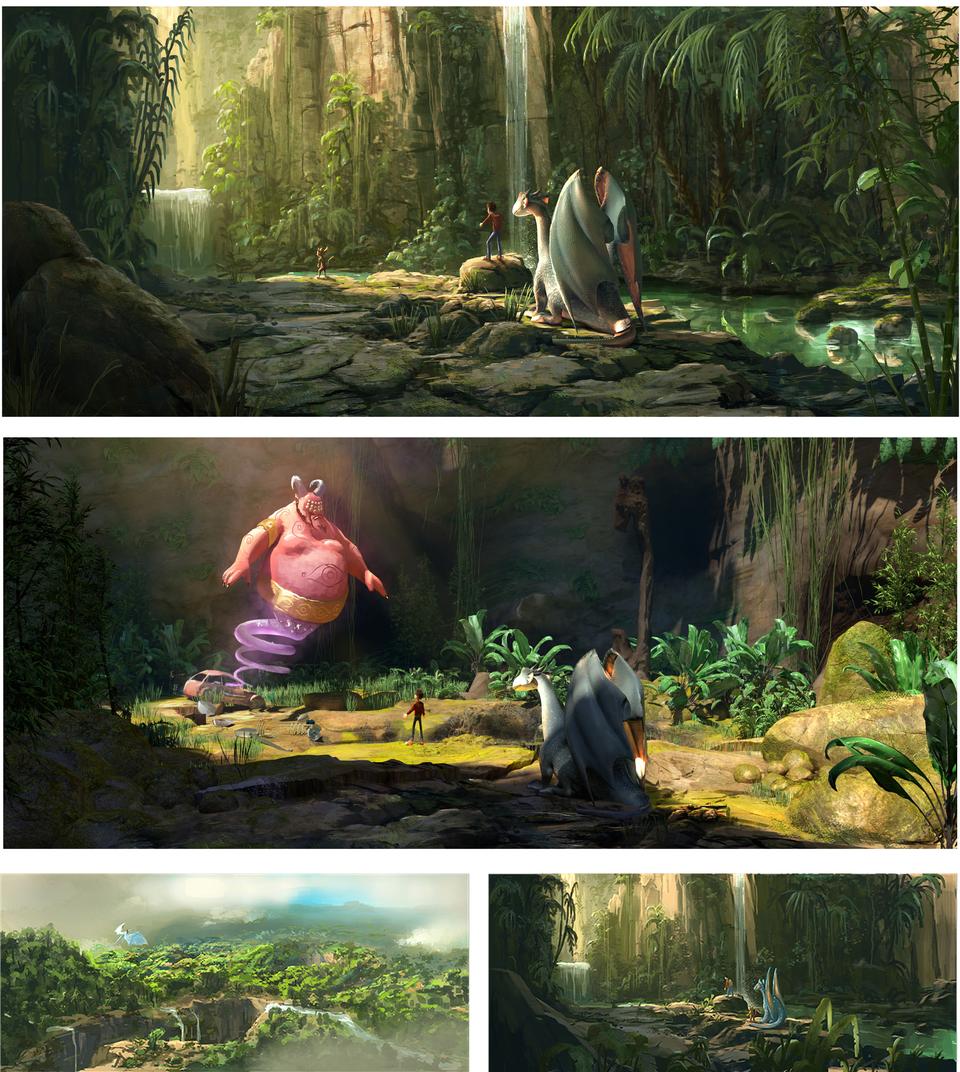

The India set and temple of the dragonrider
After narrowly escaping the dangerous Djinn, the heroes continue their journey to India. In a bay they head for the village where the seer Subisha Gulab lives. The temple in which the story of the dragon rider is told is enthroned high up on a hill. With its vegetation, the bay is reminiscent of Kerala in the south-west of India. Conceptually, the village should look poor and improvised, but with its brightly colored colors it should set itself apart from all other sets, especially the very monochrome Himalayas set that followed. The architecture of the Dragon Rider Temple is based on the style of Hindu buildings of the 10th and 12th centuries, with its classic tower structures consisting of the slightly curved temple tower Sikhara and the underlying, separated Garbhagriha, in which the sanctuary is located.
Himalayas sets and the rim of heaven
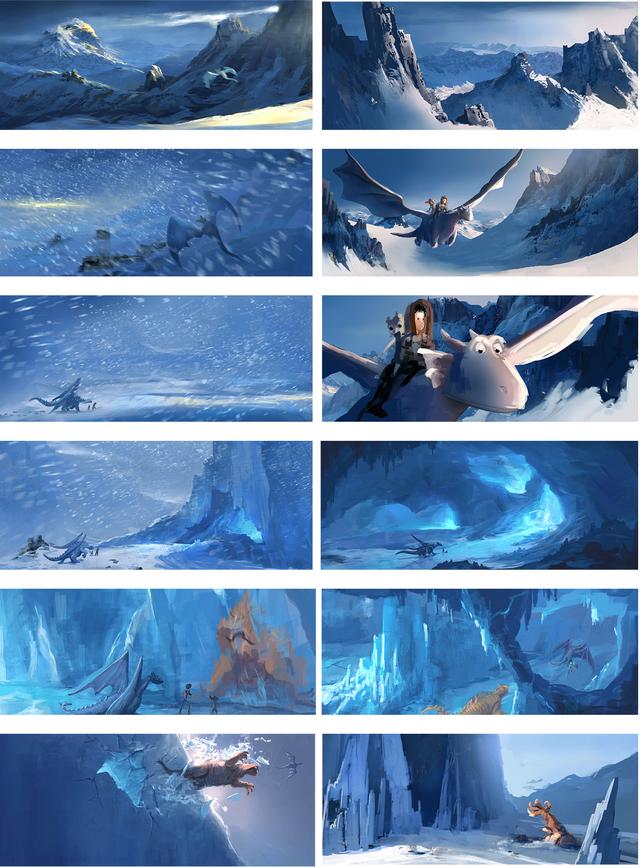

The last part of their trip takes place in the Himalayas Mountains. Stylistically, things come full circle here. The inhospitable and cold environment corresponds to the atmosphere that the Dragon Valley is supposed to suggest; rather, it seems to be even more hostile to life. Dramaturgically, a retarding moment is created here, in order to allow the audience to immerse themselves in the hopeful and fantastic landscape of the Rim of Haven after the action-packed showdown. The angular, crystal-like, almost black rock formations protrude into the sky like pointed fingers and are highlighted in contrast by the soft, cyan-blue snow banks. To escape a snow storm, our heroes take refuge in a gigantic crystal cave. The idea of telling a surreal space here once again allows the real and metaphysical world to merge further. The gate to the hall where the showdown takes place is high up on a gigantic, crater-like mountain peak. The architecture in the hall with its geometric columns composed of many small cuboids draws its analogy from the rock formations and thus looks like a part of the mountain itself; ancient and out of this world. After the magical secret exit in the hall has opened, our heroes step out and enjoy the vastness and freedom of the Rim Of Heaven. For a brief moment a place of hope is revealed to the viewer. Lush green meadows and gentle valleys; crystal-colored waterfalls and colorful flower borders; everything is embedded in a soft sea of clouds, which is supposed to protect this magical place from intruders like a gigantic barrier.
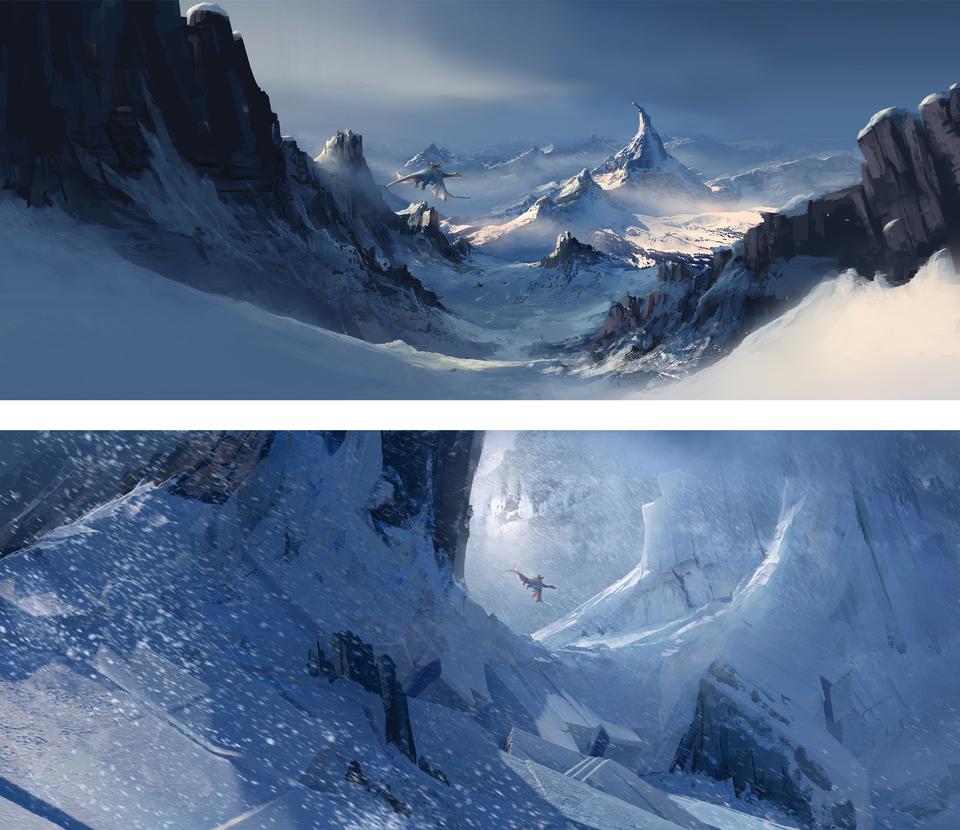







The professors resort
The story ends with a short sequence in which the professor's estate is shown, where he lives in harmony and contentment with his family and the mythical creatures. We see Ben, who was taken in by the professor and how they wave goodbye to the dragons on their last trip to the Rim Of Heaven. In terms of landscape, the set is based on certain coastal regions of New Zealand. The property is characterized by the American country house style.



